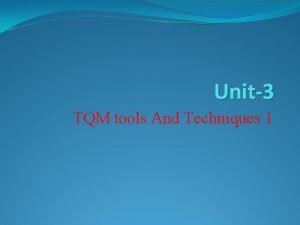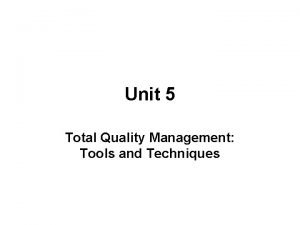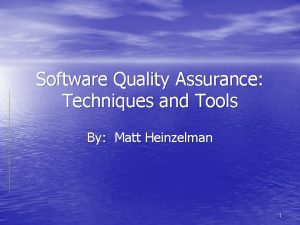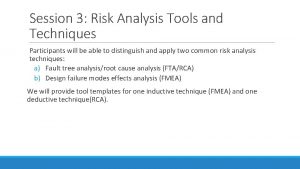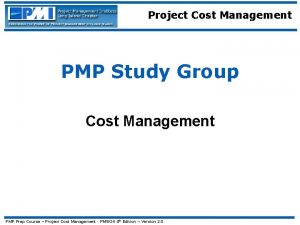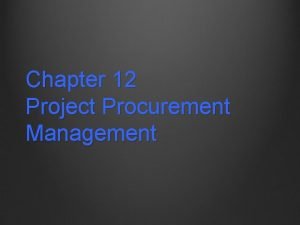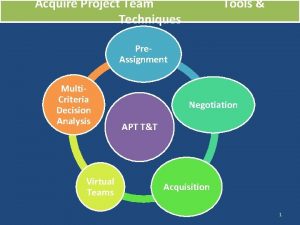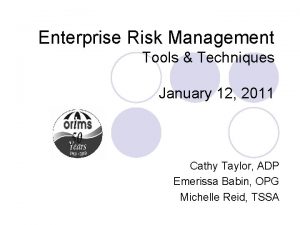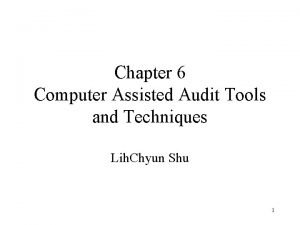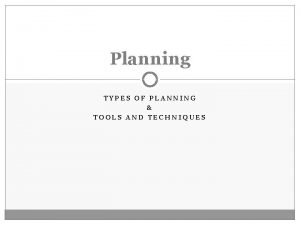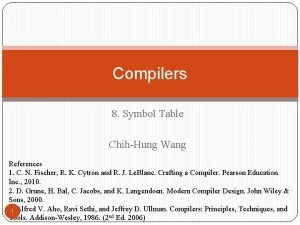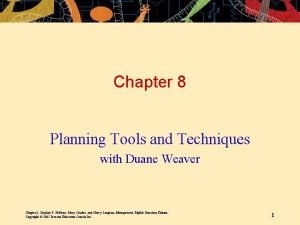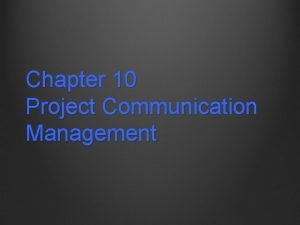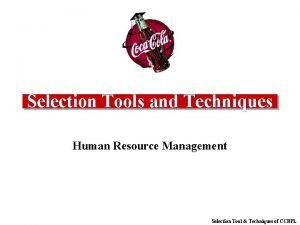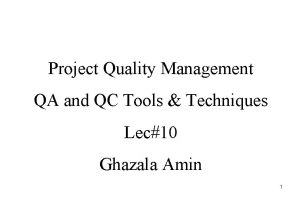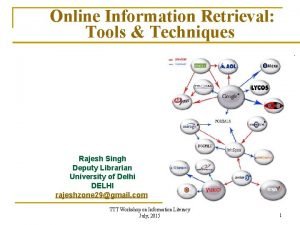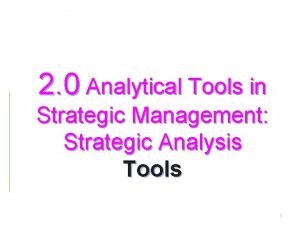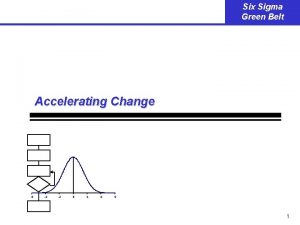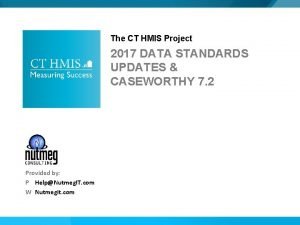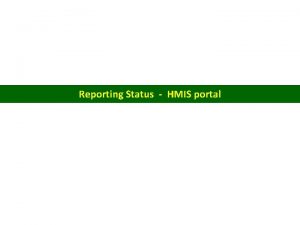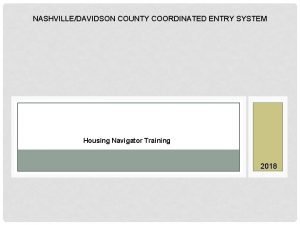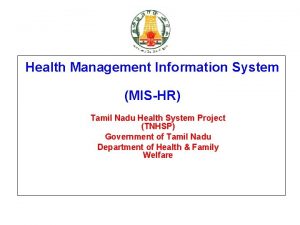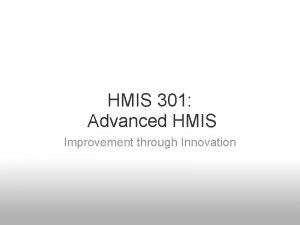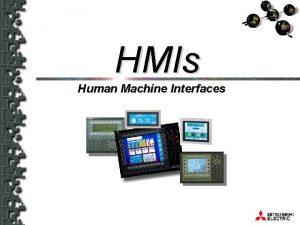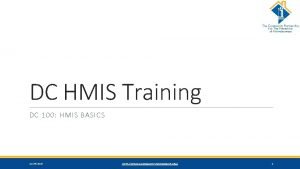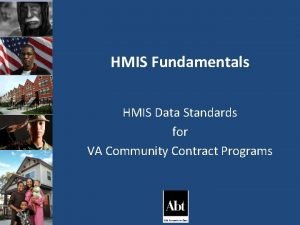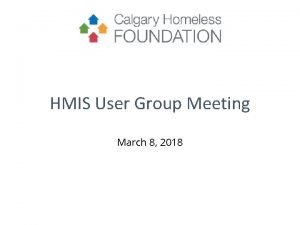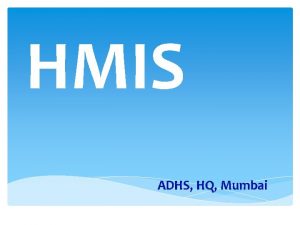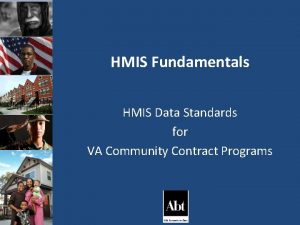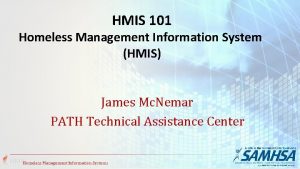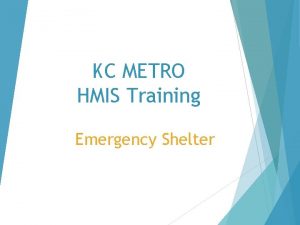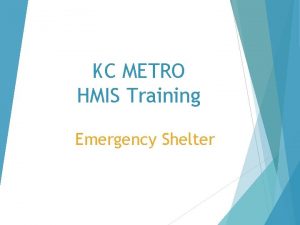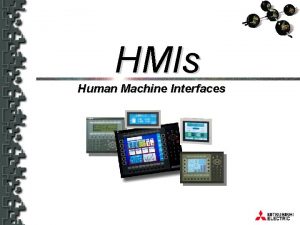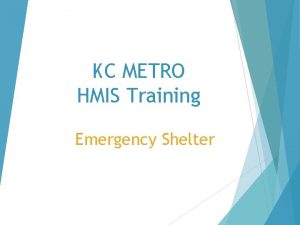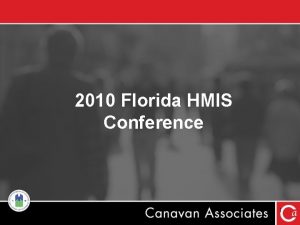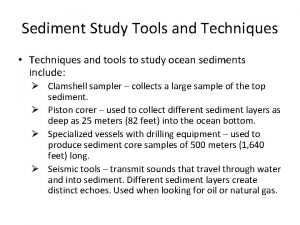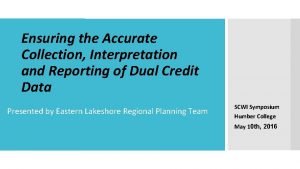Tools and Techniques for Ensuring an Accurate HMIS




























- Slides: 28

Tools and Techniques for Ensuring an Accurate HMIS Implementation Matthew D. Simmonds President Simtech Solutions, Inc. October 12, 2012

What Tools & Practices Should We Consider? • • Supporting Documentation Service Level Agreements (SLAs) HMIS Vendor Compliance Reviews HMIS Conversion Audits HMIS Implementation Audits Ongoing Data Quality Monitoring Data Cleansing (Automated and Manual)

What is the purpose of a Service Level Agreement (SLA)? The intent of an SLA is to provide the following: • Reduce the areas of conflict • Encourage healthy dialogue in the event of disputes • Eliminate unrealistic expectations • Define the roles of both parties • Set realistic expectations

• • What should be covered in a Service Level Agreement (SLA)? Uptime requirements Privacy and security guidelines Issue response protocol Compliance with HUD data collection requirements Compliance with HUD reporting requirements Data exchange capabilities Disaster Recovery/backup Dispute Resolution

Process Flow for Distributed Reporting & Data Warehousing

HUD XML Exchange Format

XML to CSV Parsing Utility • XML Data is passed through the XML to CSV Parser, which converts it into the HUD CSV Exchange Format. • The parsing utility is available for download from HUDHRE. info.

HUD CSV Exchange Format

‘HMIS-Lite’ Applications • Client-side applications can be used by providers that do not use traditional web-based HMIS systems such as Domestic Violence programs, faith-based providers and those in areas without Internet access.

Check Data Quality – Program 1 • Data Quality Scorecards can be used to verify the data meets certain data quality thresholds. • The above program appears to be operating at well above capacity towards the end of the reporting period.

Data Cleansing Data that does not meet the requirements can be optionally cleaned up by the system automatically. This might include auto-exiting clients that have not been recently seen, removing duplicates, and other data handling.

Check Data Quality – Program 2 • The above program appears to be operating at well above capacity towards the end of the reporting period.

Data Rejected • If, after cleaning, the data still appears to be erroneous it is rejected

Data Accepted • If, after cleaning, the data is deemed to be acceptable it can be used to create other reports.

Create Reports • • • Once the data has been verified and/or cleaned, reports can be created. With either a warehouse or DRM, these reports can be created over a variety of difference data sources at once. This is useful for regional reports such as AHAR as well as reports such as APRs that may require data from multiple sub-grantees. These reporting tools can also be used to validate a vendor’s work.

Report Specifications • If any Report Programming Specifications have been developed, they can be used to implement mandated reports

Data Quality Scorecards – Capacity Utilization • The Capacity Utilization component of Data Quality Scorecards provides an “at -a-glance” preview of a wide array of program attributes including bed capacity, the utilization of these beds over time according to both bed service records and program enrollments, and what was reported for the annual HUD point in time count.

Data Quality Scorecards – Data Completion • The Data Completion Rate portion of Data Quality Scorecards allows users to identify the aspects of the reporting set that are viable for reporting.

Stay Pattern Analysis • This Length of Stay Histogram shows the total number of days each client stayed at a shelter during the reporting period. This helps maximize the ROI of re-housing dollars.

Chronic Homeless Status Audits • Identifies clients that appear to be incorrectly marked as not chronic when they meet the definition, as well as clients incorrectly marked as chronic when they do not.

Daily Client Census Using non-HMIS data alongside HMIS data can be of significant value. This chart shows the impact of the weather on shelter demand.

Co. C Annual Performance Report • The report sample above is from the APR Generation Tool which was built according to the HUD APR Programming Specifications and is made available, free of charge, at HUDHRE. info.

HPRP Annual Performance Report • The HMIS Vendor Test Kits that were released with the APR Generation Tool include sample data that can be entered or uploaded into a HMIS. • Once done, the report output from the HMIS can be tested by comparing it with the output from the APR Generation Tool.

HPRP Quarterly Performance Report • Auditing the financial assistance given to each client allows for this data to be used for cost-benefit studies.

Annual Homeless Assessment Report • No formal programming specifications exist for the AHAR as of yet. • Notable disparities between AHAR and APR are detailed within the APR Programming Specs. • ES-IND needs to look at Bed Management model.

Point In Time Trends • • • The Co. C PIT count is created using a mash of data from HMIS sources, non-HMIS sources for faith based and DV providers, as well as mobile phone and tablet apps for street outreach providers. Regional reports are a compilation of data from the varied local reports. It is important for proper reporting to ask the root questions. For example, ask gender and veteran status separately to discern the total number of female veterans.

Questions?

Matthew D. Simmonds Matt@Simtech. Solutions. com 617 -395 -6669 ext. 21
 Principles to actions
Principles to actions Tqm tools and techniques
Tqm tools and techniques Tools and techniques of quality management
Tools and techniques of quality management Software quality assurance tools and techniques
Software quality assurance tools and techniques Risk analysis tools and techniques
Risk analysis tools and techniques Cost management tools and techniques
Cost management tools and techniques Pla tools and techniques
Pla tools and techniques Discuss the importance of data in a legal research.
Discuss the importance of data in a legal research. Conduct procurement tools and techniques
Conduct procurement tools and techniques Pre assignment tools
Pre assignment tools Erm tools and techniques
Erm tools and techniques It audit tools and techniques
It audit tools and techniques Types of planning tools
Types of planning tools Compilers: principles, techniques, and tools
Compilers: principles, techniques, and tools Planning techniques and tools
Planning techniques and tools System development tools and techniques
System development tools and techniques Monitor communications process tools and techniques
Monitor communications process tools and techniques Hr selectietool
Hr selectietool Qcc tools and techniques
Qcc tools and techniques Project quality plan
Project quality plan Information retrieval tools and techniques
Information retrieval tools and techniques Strategic analysis tools
Strategic analysis tools Why strategic planning is important
Why strategic planning is important Change management tools and techniques
Change management tools and techniques Cthmis
Cthmis Hmis portal
Hmis portal Housing navigator training
Housing navigator training Www.tnhmis.org
Www.tnhmis.org Hmis clearance
Hmis clearance

